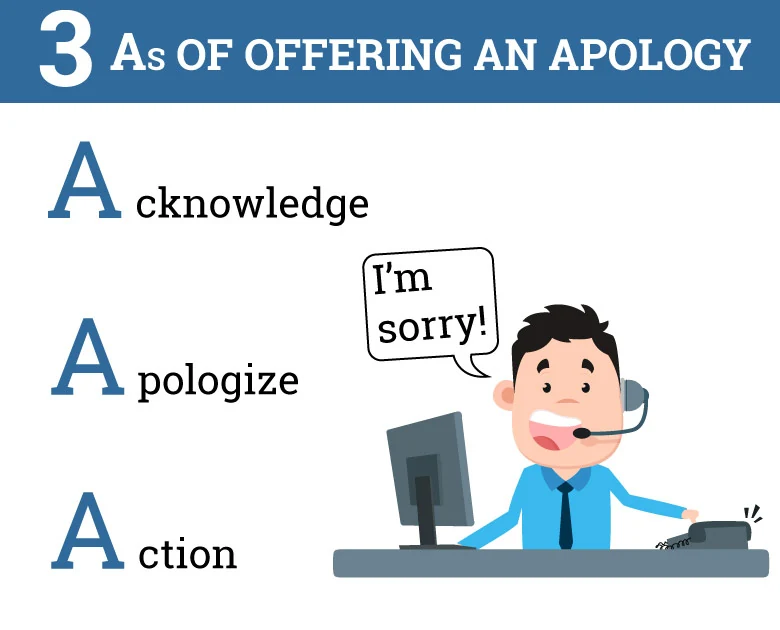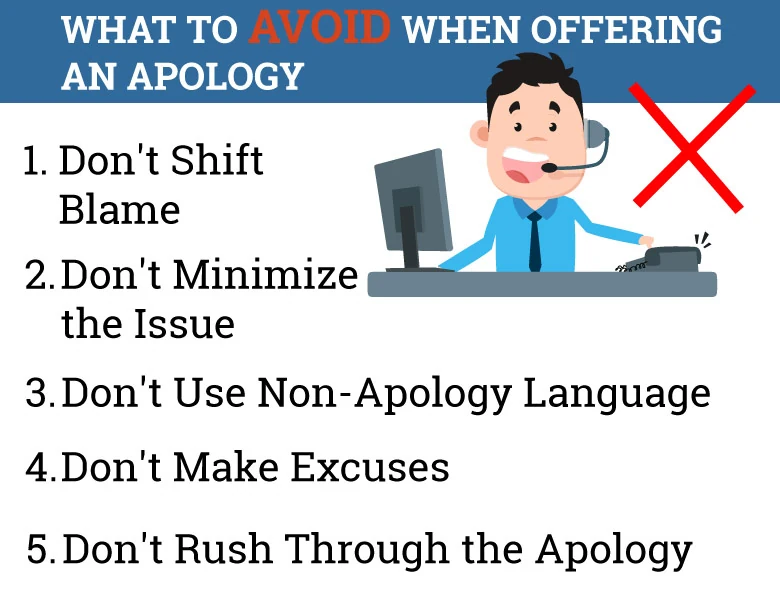Effective communication is the cornerstone of excellent customer service. Specifically, the ability to offer a genuine apology when things go wrong plays a crucial role in managing customer relationships and upholding the company's reputation. This blog aims to equip call center agents with essential strategies to convey heartfelt apologies, ensuring that every customer interaction is handled with empathy and professionalism.
What is the Impact of Apologizing in Call Centers?
Customer satisfaction is the key to success in any service-oriented industry, particularly in call centers where agents are the primary interface with customers. When issues arise, as they inevitably do, the quality of support provided can either salvage a customer relationship or cause it to break down completely.
Apologies, when offered genuinely, can mitigate frustrations and set the stage for effective problem resolution. They serve as an acknowledgment of inconvenience faced by the customer, demonstrating that the organization cares about their experience and satisfaction.
Genuine apologies have the power to reinforce customer loyalty and improve retention rates even after a service mishap. Apologies contribute to building trust, showing that the company stands behind its service promises and values its customers. When apologies are heartfelt and backed by sincere efforts to rectify the mistake, customers are more likely to forgive errors and continue patronizing the business.
What is the Best Approach for Offering an Apology?
The three A's of offering an apology are a great framework for ensuring a sincere and effective apology:

1. Acknowledge
Begin by acknowledging the issue or mistake. This involves showing an understanding of what went wrong and taking responsibility for it. It's crucial to demonstrate empathy and understanding of how the situation affected the other person.
2. Apologize
Offer a sincere apology. This means expressing regret and remorse for the inconvenience, harm, or offense caused. Use clear language to convey that you acknowledge the impact of the mistake and that you are genuinely sorry.
3. Action
Follow up with concrete actions to address the issue or prevent it from happening again. This could involve rectifying the mistake, offering compensation if applicable, and outlining steps you will take to ensure a similar situation doesn't occur in the future.
Scenario
Let's consider a specific example in a call center scenario:
A customer calls the helpline to report an error in their bill. After investigating, the agent realizes that there was indeed a mistake in the billing system, leading to an overcharge on the customer's account.
Three A's Approach:
1. Acknowledge: The agent begins the conversation by acknowledging the customer's concern and expressing understanding of their frustration. For example, "I understand how frustrating it must be to see an incorrect charge on your bill. I’m sorry that we didn’t catch that and that you had to take the time out of your day to call us about it.”
2. Apologize: The agent then offers a sincere apology for the mistake. They say, "I sincerely apologize for the billing error. It was our oversight, and we take full responsibility for it."
3. Action: The agent takes immediate action to rectify the issue. This involves correcting the billing error, issuing a refund, and ensuring that the customer's account reflects the accurate information. Additionally, the agent explains the steps they'll take to prevent similar errors in the future, such as conducting a thorough review of billing processes.
By following the three A's approach in this call center scenario, the agent not only addresses the immediate issue but also demonstrates a commitment to resolving the problem and preventing its recurrence, which can help rebuild trust and satisfaction with the customer.
What to Avoid Doing When Offering an Apology
Apologies, when done well, can mitigate frustrations and set the stage for effective problem resolution. However, the keywords here are “when done well.” There are many ways an apology can be botched, and here are 5 tips for how not to botch an apology.

1. Don't Shift Blame
Avoid blaming others or external factors for the mistake. Taking responsibility is key to a sincere apology.
For example, if a customer complains about receiving a faulty product, avoid saying, "Our warehouse team must have made a mistake." Instead, take responsibility directly without deflecting blame, such as, "I apologize for the inconvenience caused by the faulty product."
2. Don't Minimize the Issue
Never downplay the significance of the problem or its impact on the customer. Acknowledge the seriousness of the situation and its effect on them.
For example, if a customer reports a service outage that affected their business, don't say, "It was just a temporary glitch." Acknowledge the impact by saying, "I understand how frustrating it must have been to experience a service outage during business hours."
3. Don't Use Non-Apology Language
Phrases like "I'm sorry you feel that way" or "I apologize if you were offended" can come across as insincere. Instead, offer a direct apology for the specific mistake or issue.
Suppose a customer expresses dissatisfaction with a delayed delivery. Instead of saying, "I'm sorry you feel that way about the delay," offer a genuine apology like, "I apologize for the inconvenience caused by the delayed delivery."
4. Don't Make Excuses
While it's important to explain the context or reasons behind the mistake, avoid making excuses that sound like justification. Focus on what went wrong and how you will rectify it.
For instance, if a customer complains about receiving incorrect information from a previous agent, avoid saying, "They must have misunderstood." Instead, acknowledge the mistake and focus on resolution, such as, "I apologize for the confusion caused by the incorrect information. Let me provide you with the accurate details."
5. Don't Rush Through the Apology
Take the time to listen to the customer's concerns and express your apology sincerely. Rushing or sounding robotic can make the apology seem insincere.
For example, when a customer expresses frustration about billing errors, don't rush through your apology with a generic statement. Take the time to listen, empathize, and offer a sincere apology, such as, "I'm truly sorry for the billing errors you've experienced. Let's work together to resolve this issue promptly."
What are Some Communication Skills for Building Trust Through Apologies?
Building Rapport with Customers through Authentic Apologies
A genuine apology has the power to resolve the immediate complaint and build a stronger relationship with the customer. When apologizing, personalize your approach by using the customer’s name and referencing specific details of the complaint.
This demonstrates personal attention and respect for the customer’s unique situation, laying a foundation for trust. Acknowledge the inconvenience experienced by the customer and provide assurances about steps taken to avoid similar issues in the future, which shows commitment to improved service.
De-Escalation Techniques to Manage Customer Anger or Frustration
Dealing with an angry or frustrated customer is challenging, but essential techniques can help de-escalate the situation. Remain calm, listen patiently, and let the customer express their feelings without interruption.
Acknowledging their emotions with statements like "I can understand why you feel that way," creates a validating environment. Offering solutions or alternatives also helps lower the intensity of the customer's emotions. Remember, a calm and composed demeanor is contagious and can help pacify a heated interaction.
Enhancing Active Listening and Response Strategies for Effective Apologies
Improving your active listening and response strategies is vital for effective apologies. This involves not only hearing but also understanding the customer’s concerns from their perspective.
You can enhance your listening skills by avoiding premature conclusions about the customer's issues and instead ask questions that encourage a full expression of their concerns.
When responding, ensure your feedback is constructive and focused on resolution. Promptly summarize the action steps you intend to take to resolve the problem, ensuring the customer feels their issue is being actively handled.
By mastering these apology and communication techniques, call center agents can turn potentially negative situations into positive outcomes, enhancing customer satisfaction and loyalty.
